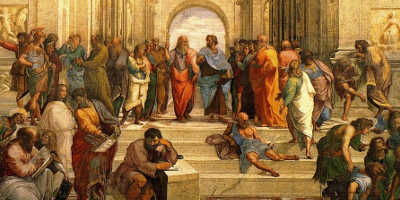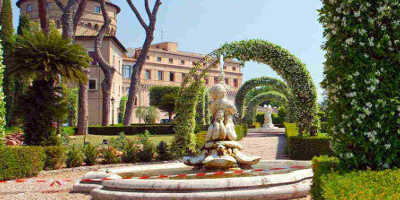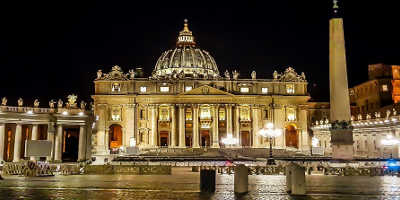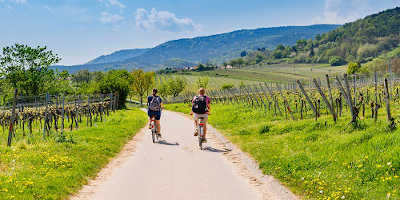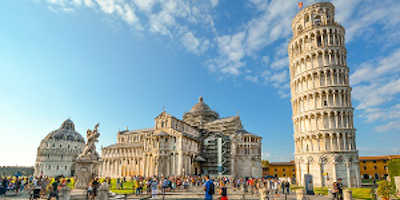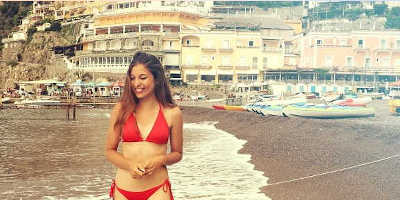Michelangelo and the Church
Michelangelo is famous across the world for his stunning art pieces. He is as one of the best artists of the High Renaissance, and his works are synonymous with Italian art.
Having completed just a year of a three-year apprenticeship after having nothing more to learn, it was clear Michelangelo was a talented artist. He was taken under the wing of Lorenzo de’ Medici, known as the Magnificent. However soon the house of Medici was in turmoil and Michelangelo left Florence.
Bacchus and introduction to the church
Michelangelo’s first surviving marble work, Bacchus, saw him quickly recognised by the church for his talents. The composition of Bacchus is unique for a Michelangelo work. Made specifically for a garden it is a rare example of his ability to produce works to be viewed from all angles. Not long after its completion, Michelangelo was commissioned by French Cardinal Jean de Bilheres.
The commission was made to be the cardinal’s funeral monument, however, centuries after its competition it was moved into St Peter’s Basilica. The sculpture shows the Virgin Mary holding the body of Jesus after his crucifixion. The statue is the only work of Michelangelo that he signed.
The work is particularly impressive as Michelangelo was able to extract two figures from a singular slab of marble. Art historians say that he treated the figures as a singular mass but underlines their contrasts (clothed and naked, sitting and lying, alive and dead) to separate the two.
The work was a resounding success for him and lead the commissioning of David.
David
Having broken into the church market, though realistically this was the only market in the 14/1500s. The over 5m tall statue was commissioned as a series of statues of prophets to be displayed at the Florence Cathedral. However, it quickly became apparent that the statue was quite grand, and instead, it was placed in the town square. With his glaring look, David was positioned to be looking towards Rome, giving them a warning from the then city-state.
During this same time, Michelangelo worked on several Madonnas for private collections. They showed a range of artistic depth and included both sculpture and painting, including his only easel work.
Post-David saw Michelangelo begin to take on more large-scale projects around Florence. However, he refused to accept help from assistants, and many of the projects remained incomplete.
First return to the Vatican
During this time Pope Julius II called Michelangelo to Rome and commissioned him to create an elaborate tomb with 40 large statues. Tombs were becoming increasingly grand and the Vatican was not going to be left behind. The pair had equally ambitious plans for the tomb, however, funds were cut off and it never came to actuation. Michelangelo believed that his funds were cut as a result of the building of St Peter’s Basilica.
Second return to the Vatican
Having been left high and dry on the tomb project, Michelangelo returned to Florence. However, the Pope wasn’t pleased and wanted his prized artist to return. After placing pressure on the Florentine government to return Michelangelo, he was put to work in Bologna, before being given the task of painting the Sistine Chapel.
The Sistine Chapel
At last, we have arrived at perhaps Michelangelo’s most famous church work. The Sistine Chapel was already of significant symbolic importance within the Vatican when Michelangelo was asked to paint it. Its walls had already been lined with immaculate paintings, and it was quite unusual to have the unimportant ceiling painted. Nevertheless, the Pope had Michelangelo paint it.
The original design plan for the ceiling was to create a homage to the Twelve Apostles. Michelangelo painted seven male and five female prophets, which was quite unusual for the time. He placed the twelve figures around the perimeter of the ceiling. The central corridor he kept bare to create an unusual display of scenes. Before this, ceilings were kept quite plain and extravagant scenes did not adorn them. Regardless, Michelangelo painted the now-iconic nine scenes of the Genesis.
Michelangelo was working in an unfamiliar medium when decorating the roof, and you can see his confidence grow throughout the paintings from his start point. Looking from the entrance and towards the altar, you’ll notice the figures become more complex as they move away from you. A recent analysis of the painting shows that Michelangelo became so confident that by the final paintings he was no longer etching into the surface or drafting his story in pencil.
Conspiracy Theories
Having worked so extensively for the church and creating incredibly recognisable works, it should come as no surprise that there are several modern-day Michelangelo conspiracy theories.
The Mary Debate
Michelangelo’s Pieta is a fairly typical depiction of the crucified body of Jesus in Mary’s arms. At the time of its unveiling, there were comments about the youthful look of Mary. However, it was quite usual for Mary to be depicted as young, and at the time it was mostly dismissed as a slightly younger than usually depicted.
In recent times, a theory has emerged that the statue is showing not the Virgin Mary but Mary Magdalene. There has been some speculation that Mary Magdalene was Jesus’ lover, however, this is not accepted by the church. If the statue is of Mary Magdalene this would explain the youth of her face. Further, the discovery of what is believed to be an original terracotta model of the statue includes a Cupid. Why would Michelangelo include a Cupid if not to suggest a romance between the two?
Hidden messages in the Sistine Chapel
There are a million and one theories about hidden messages and themes within the Sistine Chapel’s ceiling painting. The most common however is the inclusion of hidden anatomy drawings. Michelangelo had studied anatomy for many years as a young man before he became an artist. There is a famous illustration of what may be the cross-section of the human brain. This painting could be a snub to the Catholic Church. By the time Michelangelo was painting the chapel he had begun to turn on the church, instead preferring to practice spirituality. The inclusion of the human brain may be a reference to the Church’s disregard for science.
A long history
As you can see, Michelangelo had quite the history with the Catholic Church and the Vatican. There are many more stories about the fascinating artist and his tumultuous relationship with the Church. You’ll learn more about him and his art for the Church on our Vatican & Sistine Chapel Tour. We provide skip the line tickets so you’ll spend the most time possible inside, and the least amount of time waiting!
Related article: Why is Michelangelo famous?




